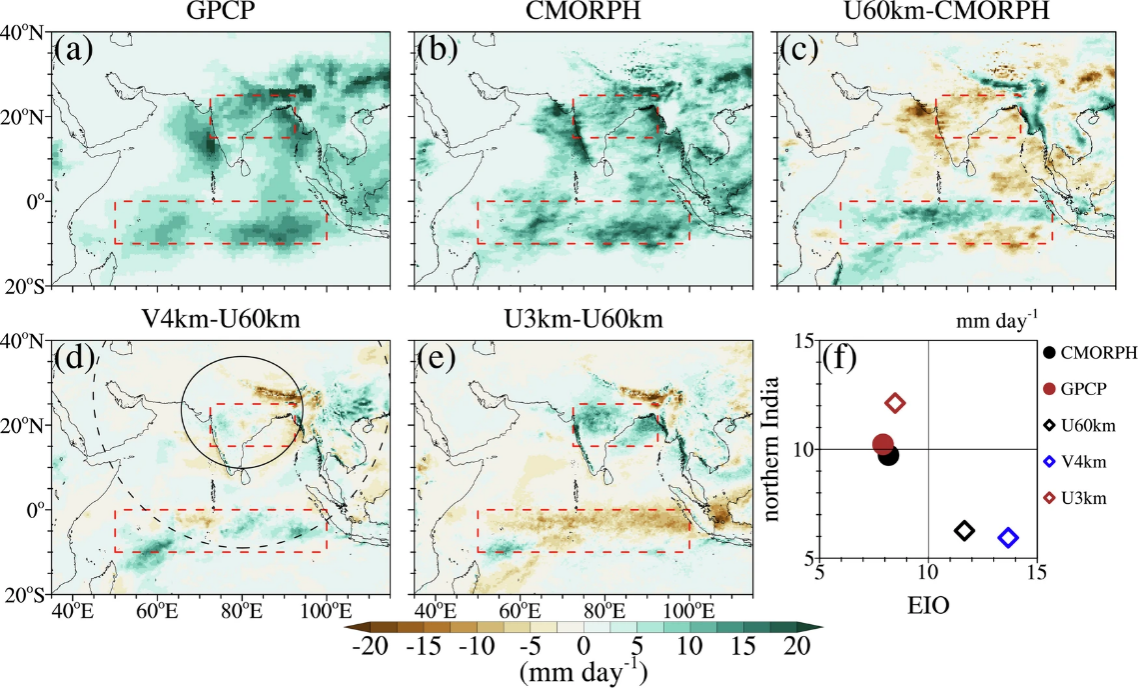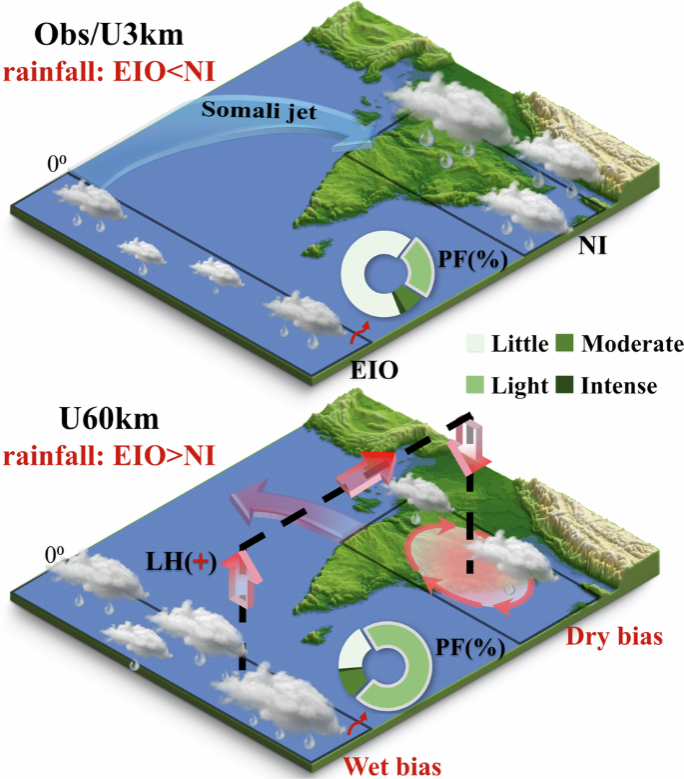The accurate simulation and prediction of the South Asian summer monsoon is vital for regional climate security and disaster preparedness. However, current global climate models (GCMs) continue to suffer from systematic errors, most notably, excessive light rainfall over the equatorial Indian Ocean (EIO) and a persistent dry bias over the Indian subcontinent.
In a recent study conducted by the University of Science and Technology of China (USTC), researchers provided new insights into these biases through comparative simulations, revealing how overestimated equatorial light rains can induce a dry bias in northern India from a circulation dynamics perspective.
Using the high-performance Sunway supercomputer and the integrated Atmospheric Model Across Scales (iAMAS), the research team conducted a series of ensemble experiments simulating monsoon activity over one month. Three types of global model configurations were employed: a quasi-uniform 60 km resolution (U60 km), a variable 4 km regional refinement model (V4 km), and a convection-permitting 3 km global resolution (U3 km).

Comparison between simulations of different resolutions (Image from LI Gudongze et. al)
Results showed that both U60 km and V4 km simulations exhibited dry bias over northern India and excessive rainfall over the equatorial rainbelt, while the high-resolution U3 km model offered modest improvements, indicating the importance of resolving convection explicitly.
Delving into the mechanism, the study found a trade-off in simulated precipitation between the EIO and the Indian subcontinent. In models with convection parameterization, light rainfall over the EIO is significantly overestimated, leading to enhanced latent heating and anomalous upward air motion. This, in turn, causes compensatory downward air movement over northern India—a Hadley-type anomalous circulation—resulting in the observed dry bias. The study attributes this to the upscale effects of convection parameterization.

Overestimation of light rains and dry bias (Image from LI Gudongze et. al)
Furthermore, the research highlights that some models compensate for the overestimation of light rain by underrepresenting heavier rainfall events. While this may align the total precipitation with observations, it compromises the models' ability to forecast extreme weather, as revealed by discrepancies in the precipitation spectrum.
These findings emphasize the critical need to improve model resolution or refine convection parameterization schemes in order to mitigate systemic biases and enhance the reliability of climate forecasts in monsoon-affected regions.
Paper link: https://doi.org/10.1038/s41612-025-00916-1
(Written by SHI Yutian, Edited by ZHAO Zheqian, USTC News Center)